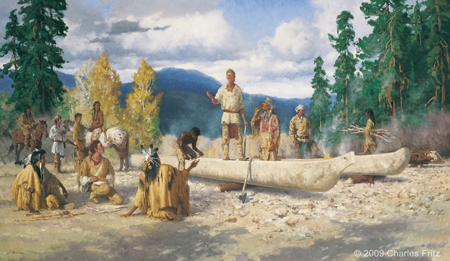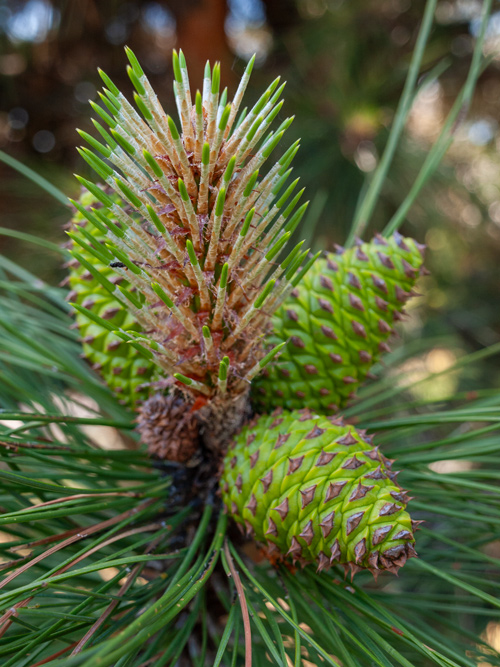At Clearwater Canoe Camp near present Orofino, Idaho, the men employ the Nez Perce method of hollowing out dugout canoes with fire. Clark prepares goods to trade for food, and Lewis adds a specimen of ponderosa pine to his plant collection.
Crafting Canoes to Ply the Columbia
36″ x 62″ oil on board
© 2009 by Charles Fritz. Used by permission.
Little to Eat
laid out a Small assortment of Such articles as those Indians were fond of to trade with them for Some provisions (they are remarkably fond of Beeds) nothin to eate except a little dried fish which the men complain of as working of them as much as a dost of salts.
—Meriwether Lewis
The Nez Perce Method
To save them from hard labour, we have adopted the Indian method of burning out the canoes.
—Patrick Gass
Ponderosa Pine
Pinus ponderosa
© 4 June 2011 by Kristopher K. Townsend. Permission to use granted under the Creative Commons Attribution-Share Alike 4.0 International license.
Ponderosa Pine, Pinus ponderosa
On the Kooskooskee On River bottoms in rich land, west of the mountains. Octbr: 1st 1805.
—Frederick Pursh copy of Meriwether Lewis’s label[1]Moulton, ed. Herbarium, specimen 131.
Weather Diary
Day of the month Wind State of the Weather 1st E fair Note from the 1st to 7th of October we were at the mouth of Chopunnuish river makeing Canoes to Decend the Kooskooske [Clearwater].
—William Clark[2]Some abbreviations have been spelled out.
Experience the Lewis and Clark Trail
The Lewis and Clark Trail Experience—our sister site at lewisandclark.travel—connects the world to people and places on the Lewis and Clark Trail.
Plan a trip related to October 1, 1805:



